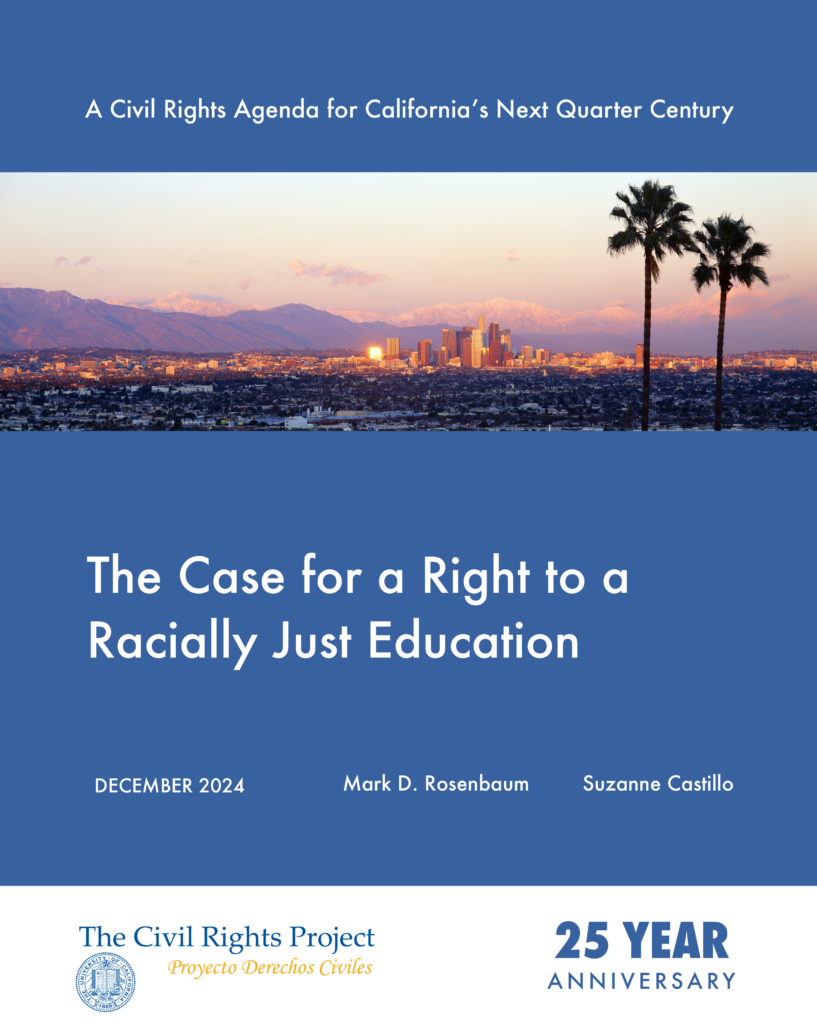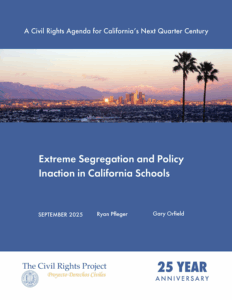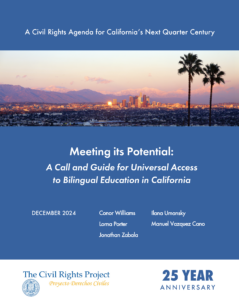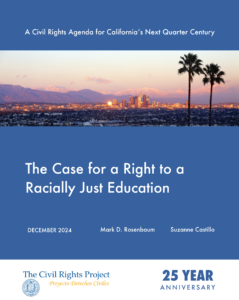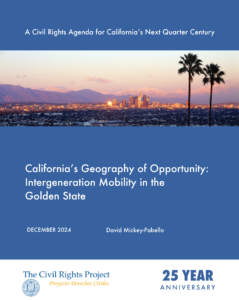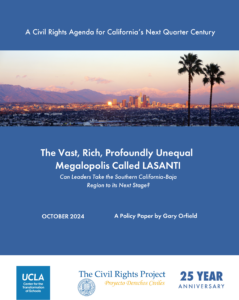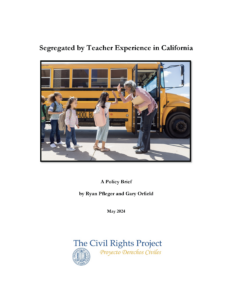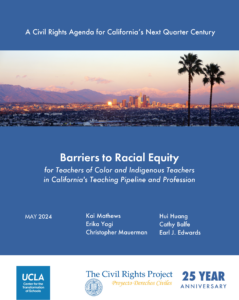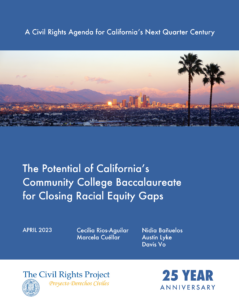Executive Summary
California’s statewide system for public education is designed to serve a minority of its students very well, and the rest, not well at all. The “haves”—students with access to necessary educational supports—thrive, while the “have nots”—students who lack these resources due to no fault of their own—lag behind. Black, Indigenous, Latino, Pacific Islander students, immigrant children, foster youth, unhoused students, students with disabilities, and English learners are consistently underserved by our schools. Over the past 30 years, much attention has been directed at the persistence of the discredited “achievement gap,” which subtly (and not so subtly) has placed the responsibility for “not achieving” on students, their families, and their communities. Today, formally conceptualized as an “opportunity gap,” this reclassification still fails to assign responsibility where it belongs: on the State’s failure to establish a public education system that ensures (not just aspires to) a high-quality education.
This paper examines how, at its core, the California statewide education system has constructed educational pipelines that perpetuate and expand stark inequities based on race, income, and immigrant status. Despite advocates’ long and hard-fought battles on behalf of California’s historically marginalized students, the State—whose Constitution holds education as a “fundamental right,” an essential predicate for other firmly established fundamental rights like voting and speech[1]—has fallen far short of realizing this opportunity as a basic and absolute right.
We argue that the legal framework underpinning California students’ constitutional right to an education obligates state educational leaders to eliminate the channels responsible for California’s “haves” and “have nots.” To fix statewide inequities, we must understand the right to education as a right that affirmatively dismantles the toxic effects of channeling. This begins with changing the conversation from what the California statewide education system arguably can deliver to what it must deliver.
This paper asserts that the main cause of California’s dysfunctional channels of public education is systemic racism. To paint this picture, we walk through the state of California’s stagnant and, in many cases, worsening, school segregation, educator workforce, school-based mental and physical health services, school discipline rates, culturally responsive curriculum, English learning instruction, academic opportunities and outcomes, and the amplified inequities due to the COVID-19 pandemic. In light of this resultant two-tiered education, an ambitious legal framework—one that defines an education as a fundamental constitutional right for all students—is an essential baseline from which California policymakers and leadership must operate. We describe litigation efforts to assert a statewide right to literacy (both in and out of California), as well as how the denial of literacy has been a principal strategy to attempt to subordinate and disenfranchise individuals of color throughout history. As a result, the constitutional right to education today requires an education that recognizes and honors the dignity of all racial and ethnic groups, rather than one that calcifies inferior access to learning and privileges white history, values, language, and norms.
We end by highlighting how issues persist in part due to chronic underfunding of schools that serve students of color, and we provide strategic recommendations that we believe necessary to dismantle the separation of “haves” and “have nots.” Students have a right of access to literacy, preparation for participation in the democracy, and acquisition of knowledge and skills to live, learn, and work successfully in California’s changing society. As long as state budgets, legislators, and decision makers continue to fail to treat education as a fundamental right and thereby ignore need—and the especially great need of BIPOC students, English learners, students with disabilities, and other high-need groups—we cannot even approach achieving an antiracist public education system.
[1] Butt v. State of California, 4 Cal. 4th 668, 683 (1992); Serrano v. Priest, 18 Cal. 3d 728, 767 (1976).
This report was published as part of a research series, “A Civil Rights Agenda for California’s Next Quarter Century,” in commemoration of the Civil Rights Project’s 25th anniversary.
In compliance with the UC Open Access Policy, this report has been made available on eScholarship: escholarship.org/uc/item/7zs2486p
